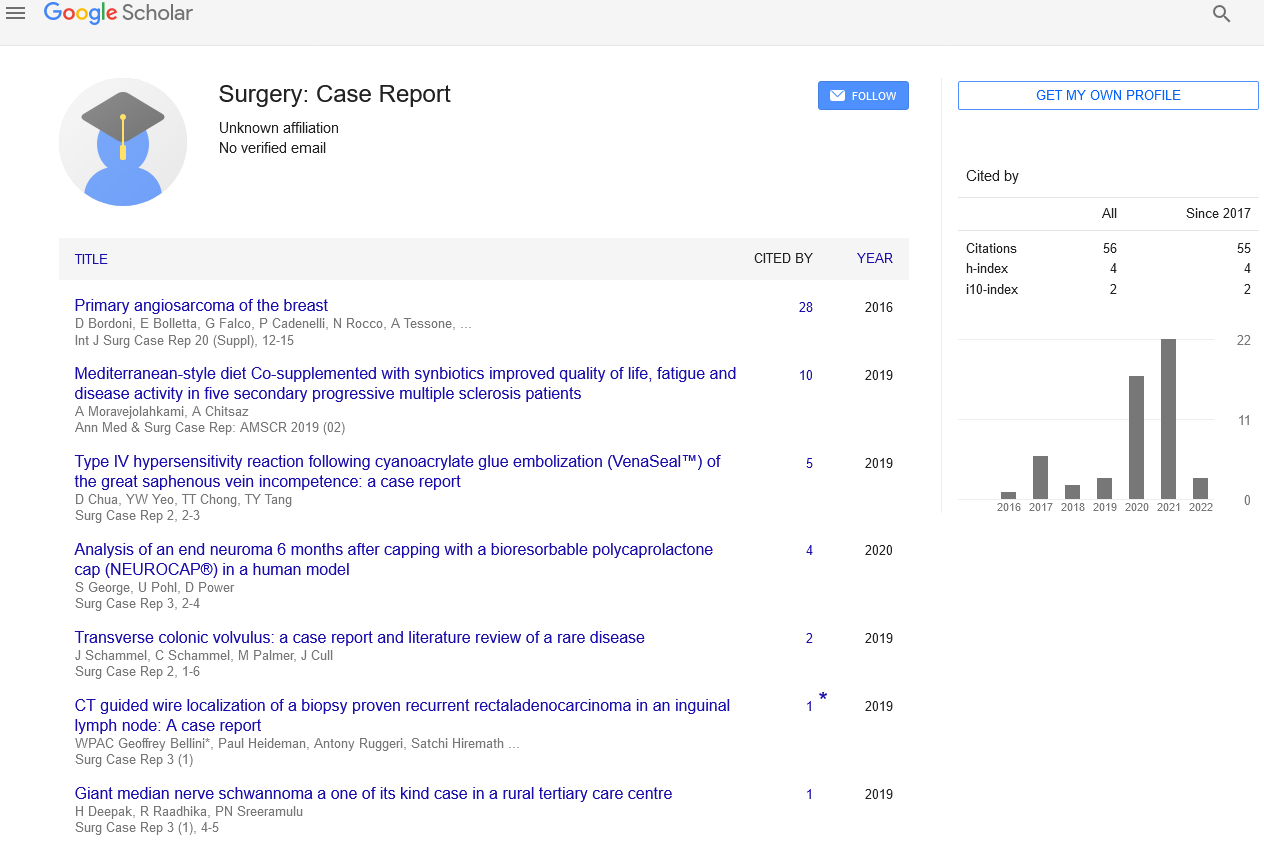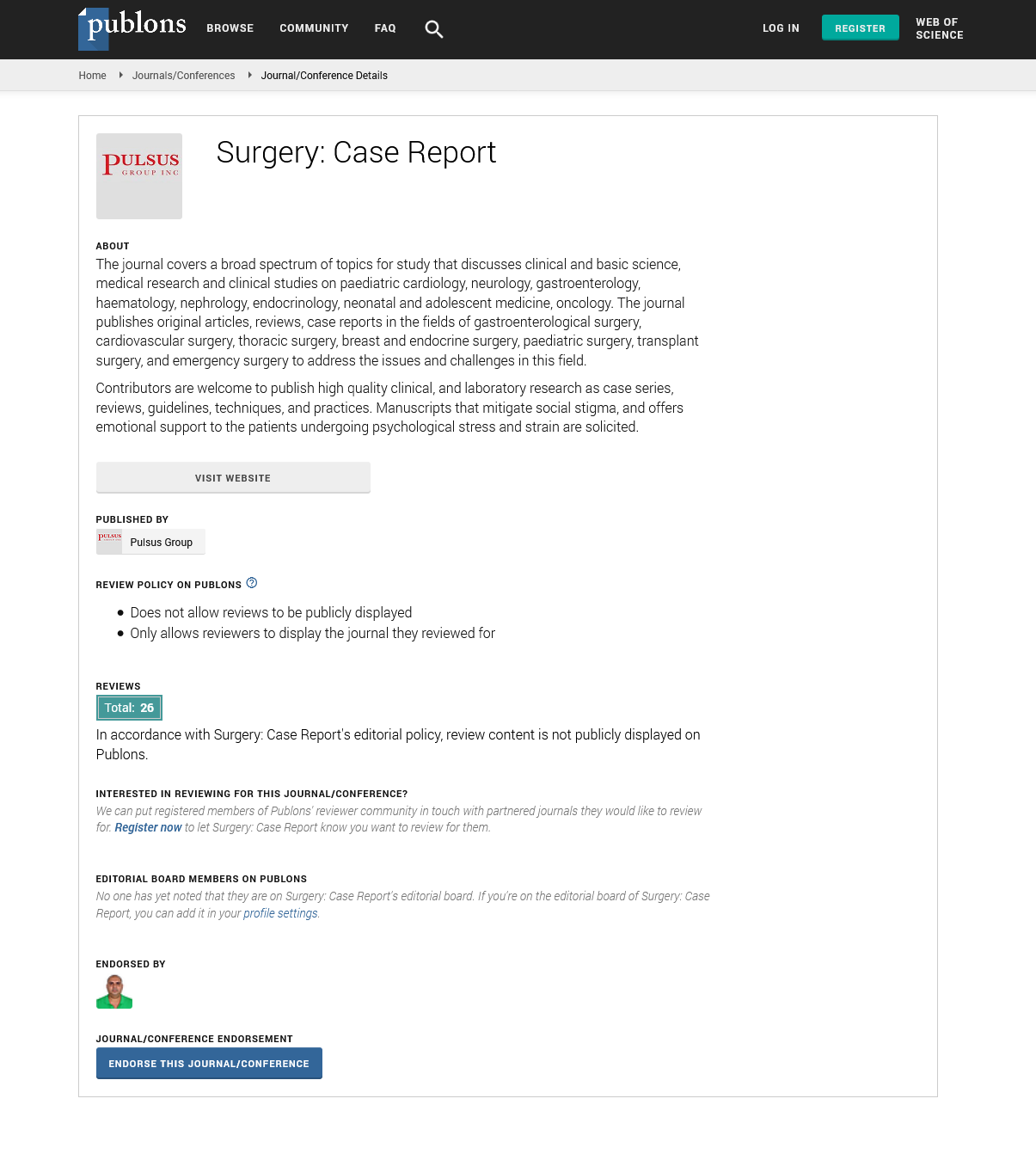Plastic surgery and its strategies in value-based healthcare
Received: 02-Nov-2021 Accepted Date: Nov 16, 2021; Published: 23-Nov-2021
Citation: Quan A. Plastic surgery and its strategies in value-based healthcare. Surg Case Rep. 2021; 5(6):2.
This open-access article is distributed under the terms of the Creative Commons Attribution Non-Commercial License (CC BY-NC) (http://creativecommons.org/licenses/by-nc/4.0/), which permits reuse, distribution and reproduction of the article, provided that the original work is properly cited and the reuse is restricted to noncommercial purposes. For commercial reuse, contact reprints@pulsus.com
Perspective
The demands on healthcare services frequently outnumber the resources available. Since the global financial crash, this disparity has expanded in many nations, and it has been more acute during the COVID-19 epidemic, as plastic surgery services have changed substantially to balance resource with need. This isn’t the first time in recent years that the importance of cosmetic or hand surgery has been highlighted. On the basis of clinical efficacy, NHS England recommended payment modifications for numerous popular surgeries in 2018, including surgery to treat carpal tunnel syndrome, trigger finger, and Dupuytren’s disease. This judgment was challenged, with the counter-argument that these methods were extremely beneficial being given. Researchers describe healthcare value as the patient outcomes obtained per unit of money; under this interpretation, both results and cost refer to the entire patient journey, rather than simply a single procedure or interaction. The value of a flexor tendon repair, for instance, is determined by the quality of postoperative therapy rather than the operation itself. Other interpretations of value have taken into account the burden on society as well as population equity, sustainability, transparency, and the patient experience of healthcare delivery.
Over the last decade, the value-based healthcare movement has gained ground around the world, and several legislations have backed value-based payment schemes. However, it has been challenged as a rebranding of health economics that is less scientific. Value-based healthcare and health economics have certain parallels. The goal of health economics is to estimate the costbenefit, cost-effectiveness, or cost-utility of a procedure or intervention. The cost-benefit analysis of an intervention relates to how much money it can save compared to the cost of the intervention. The treatment impact in “natural units” is weighed against the intervention expenses to determine cost-effectiveness. Finger joint angle improvement in Dupuytren’s disease or pain score improvement in nerve entrapment might represent natural units of therapy benefit. Unless these natural units are directly comparable, the cost-effectiveness of one therapy cannot be compared to the cost-effectiveness of another. Value-based healthcare is a cultural movement that focuses on pragmatic and actionable management solutions, whereas health economics is a science that aims to improve our assessment of the implications of The demands on healthcare services frequently outnumber the resources available. Since the global financial crash, this disparity has expanded in many nations, and it has been more acute during the COVID-19 epidemic, as plastic surgery services have changed substantially to balance resource with need. This isn’t the first time in recent years that the importance of cosmetic or hand surgery has been highlighted. On the basis of clinical efficacy, NHS England recommended payment modifications for numerous popular surgeries in 2018, including surgery to treat carpal tunnel syndrome, trigger finger, and Dupuytren’s disease. This judgment was challenged, with the counter-argument that these methods were extremely beneficial being given. Researchers describe healthcare value as the patient outcomes obtained per unit of money; under this interpretation, both results and cost refer to the entire patient journey, rather than simply a single procedure or interaction. The value of a flexor tendon repair, for instance, is determined by the quality of postoperative therapy rather than the operation itself. Other interpretations of value have taken into account the burden on society as well as population equity, sustainability, transparency, and the patient experience of healthcare delivery. Over the last decade, the value-based healthcare movement has gained ground around the world, and several legislations have backed value-based payment schemes. However, it has been challenged as a rebranding of health economics that is less scientific. Value-based healthcare and health economics have certain parallels. The goal of health economics is to estimate the costbenefit, cost-effectiveness, or cost-utility of a procedure or intervention. The cost-benefit analysis of an intervention relates to how much money it can save compared to the cost of the intervention. The treatment impact in “natural units” is weighed against the intervention expenses to determine cost-effectiveness. Finger joint angle improvement in Dupuytren’s disease or pain score improvement in nerve entrapment might represent natural units of therapy benefit. Unless these natural units are directly comparable, the cost-effectiveness of one therapy cannot be compared to the cost-effectiveness of another. Value-based healthcare is a cultural movement that focuses on pragmatic and actionable management solutions, whereas health economics is a science that aims to improve our assessment of the implications of healthcare processes as well as provide proof to substantiate commissioning decisions, according to one popular interpretation.
Patient care can have a direct or indirect impact on healthcare expenses. At the patient level, micro-costing entails a review of each resource utilised during a clinical visit. Micro-costing gives detailed and patient-specific data, which may be valuable, but it is resource-intensive. Gross costing is used to calculate average per-patient charges at the service level, capturing overall service expense. Finally, “shadow costs” are expenses that aren’t easily quantifiable. The second step towards value is reporting, if measurement is the first step. Transparency is largely limited to the healthcare provider’s internal operations. It’s possible that transparency may be constrained. External transparency is the next degree of openness, in which other healthcare practitioners as well as patients have access to outcomes and experience data. This is justified because it allows failing surgeons or services to learn from the best and promotes results-based competition. However, this may be difficult since data is often imprecise, and discouraging treatment at low-performing facilities may not always lead to change if quality improvement programs are not in place.
In different situations, value will take on different forms. It’s hard to dispute that liposculpture is beneficial to those who have untreated aggressive cancer. This concept is especially intriguing in plastic surgery, as many operations have minor utility-adjusted survival benefits compared to other disciplines of medicine and surgery. As a society advances in its hierarchy of wants, investments in outcomes, experiences, and equity provide lower returns but lower opportunity costs. In civilizations where large utility-adjusted survival increments have already been attained by advancements in diet, sanitation, and immunization, interventions with low utility-adjusted survival increments may be justified. In healthcare, value is a multifaceted term that includes outcomes, patient experience, equality, and cost. At the local and national levels, value-based plastic surgery entails rigorous assessment, transparent reporting, and pragmatic management. Major gains in valuebased plastic surgery have occurred during the previous three decades, and advances in measurement science, management strategy, and data collecting through digital medicine are expected to continue in the next years.






